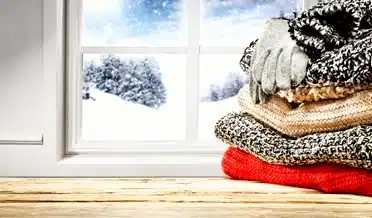5 Furnace Repair Checks to Winterize Your Home
Furnace Repair: Is Your Heater Ready for Winter
The U.S. Department of Energy, manufacturers, and professional technicians all agree that HVAC systems should be inspected and tested by trained HVAC personnel. Often, manufacturer’s warranties depend on regular maintenance. But what is involved, and why are these inspections necessary?
Winter Furnace Repair Check 1: Performance
First, a technician will investigate the proper function of the system. That is achieved by calling for heat (or cooling) and measuring the temperature difference in a room and at supply vents. There is a range of acceptable temperature differences that signal proper function. Both acceptable and unacceptable temperature output are important to the technician.
Winter Furnace Repair Check 2: Cleaning Tasks
Dirt is the enemy of any mechanical system, and that is especially true for an HVAC system.
- The technician will check the air filter and may replace a relatively clean filter just to make sure the system has a clean filter.
- The technician will check the evaporator coil and drain pan. Heat pumps still use this coil, usually associated with air conditioning. Dust and contaminates can reduce the transfer of heat, so it will be cleaned away. The blower fan blades will be checked along with the airflow performance.
- The technician will clean the condenser unit outdoors. Leaves, limbs, dirt, and lawn clippings will need to be cleaned away for the same reason as the evaporator coil—heat transfer.
Winter Furnace Repair Check 3: Coolant Pressure
The transfer of heat is important to air conditioning and, with heat pumps, to the heating function as well. Heat transfer is accomplished by a refrigerant, which exists as a gas while under pressure and a liquid when released from the pressure. The change of state achieves heat transfer. The technician will check the refrigerant pressure on both the high-pressure and low-pressure sides. A low refrigerant level indicates a leak and will interfere with heat transfer.
Winter Furnace Repair Check 4: Electrical Testing
The whole system functions on electrical sensors, switches, and controllers. Each of these components can show wear, create stress on other parts, and fail. The wear and stress can often be detected with a tester. Finding a part under stress before it fails is very beneficial, saving you from a repair bill.
Winter Furnace Repair Check 5: Combustion Check
Natural gas-powered furnaces receive a thorough inspection of the ignition and burner assembly and the heat exchanger. The connection fittings for the gas supply will be checked for leaks. The ignition source, either an electric ignitor or a pilot light, will be cleaned and tested. The burner assembly will be inspected and cleaned as needed. The heat exchanger and exhaust stack will be inspected for weakness or cracks. All of these are both safety and performance checks.
A technician will complete the appropriate tasks, give the homeowner a report of findings, and suggest corrective actions.
If Your Heater is not Ready for Winter, Call the Furnace Repair Experts at All Cool AC!
Schedule your Furnace Repair consultation by calling All Cool AC & Heating at 281-238-9292 or contact us via email and let our NATE-certified HVAC Repair technicians put their experience to work for you.
